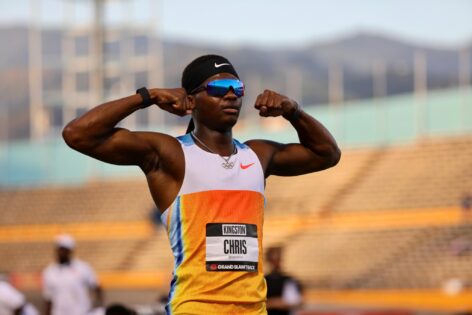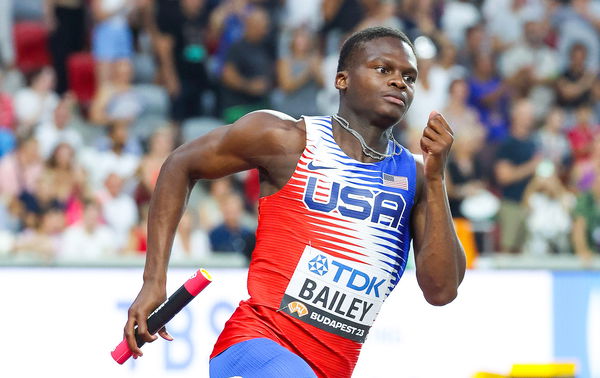

While most college athletes have a pretty easy path to their NCAA career, one American track and field athlete might’ve had a story much different. Unlike many others who, for their entire NCAA career, are mostly part of just one University team, this 25-year-old had to become a master of change and adaptability to even take a dig at the national team. Yet despite this lack of clarity, the track sensation has still managed to not just become a world champion but also an Olympian. So what did he do differently?
Watch What’s Trending Now!
Well, for one, Christopher Bailey’s NCAA adventure kicked off at City Valley, but then a sudden coaching shake-up threw him completely off course. “It was the same reason, really,” he explained in an honest The Final Leg Track & Field YouTube interview on 5th June. “There was a coaching change at City Valley—my coach got a better job opportunity, and she took it.” At first, he thought about following her, but then the transfer portal opened up a whole new world of possibilities.
“A lot more opportunities opened up for me. Financially, it was just the best decision, and that’s how I ended up at Tennessee.” This wasn’t just a simple move; it was a carefully planned leap towards finding stability. But what happens when the ground starts shaking again? In Tennessee, another bombshell dropped: the entire coaching staff changed.
ADVERTISEMENT
For most athletes, that would feel like the end of their career, but Bailey saw it as another chance. “Then, fast forward—another coaching change, this time the whole staff,” he recalled. “Pretty much the same situation: I was looking for a better opportunity.” With his final year of eligibility approaching, he knew exactly what he needed in his next program. “I knew exactly what I wanted in a program. And that’s how I ended up here.”

ADVERTISEMENT
His vision was incredibly clear, but how did he manage to stay so calm and focused through all of this? Thinking back on his mindset, Bailey admitted, “If you had asked me that when I was in high school, I would’ve said, ‘Yeah, there was some worry.’ But once I got to college, it was easier for me… I was always looking for a better opportunity, more of a challenge.”
ADVERTISEMENT
This incredible hunger for growth truly defined his unusual path. What does it take to turn upheaval and uncertainty into a triumphant journey? For Bailey, those coaching changes weren’t roadblocks at all; they were like launchpads. His story makes us think differently about what resilience looks like in college sports. How will his amazing journey inspire the next generation of NCAA stars to chase their versions of greatness?
Bailey’s Post-College Playbook
After expertly navigating the whirlwind of college transfers, Chris Bailey landed at the University of Arkansas. But this time, he wasn’t there as an athlete; he was there to guide others who were chasing their dreams. What’s it like to switch from being a fierce competitor to becoming a supportive mentor? “Last year, during the Olympic year, I was a grad assistant at the University of Arkansas in the Student-Athlete Development Department,” Bailey shared.
ADVERTISEMENT
This wasn’t just a job for him; it was a lifeline. This department, which focuses on helping student-athletes figure out their next steps after college, whether that’s going pro, heading to grad school, or jumping into full-time work, gave Bailey a real sense of purpose. “Basically, it’s a department designed to help student-athletes with postgrad plans,” he explained.

ADVERTISEMENT
But what was it that truly kept him grounded in Fayetteville? The financial support he received was a total game-changer. “Financially, it was a big help—it kept me here and allowed me to keep training,” Bailey noted. So, while he was busy mentoring other young athletes, he was also staying sharp himself, balancing his Olympic aspirations with guiding the next generation.
This wasn’t just some temporary gig; it was a smart, strategic move that allowed him to stay in the game he loves while also giving back to the community. How does a role like this truly shape an athlete’s future? And what’s the next lap for this truly inspiring rising star?
ADVERTISEMENT
ADVERTISEMENT
ADVERTISEMENT

